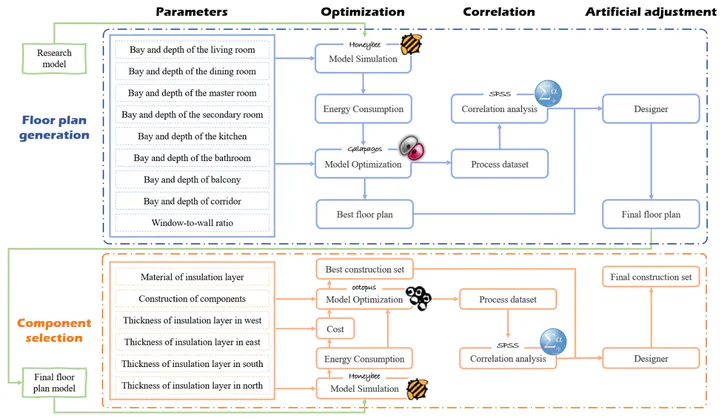Optimized Design of Floor Plan and Components of Prefabricated Building with Energy-Cost Effect
Apr 5, 2023· ,,,·
0 min read
,,,·
0 min read
Juanli Guo
Mingchen Li
Zixin Jiang
Zhoupeng Wang
And Yangkong Zhou
 Image credit:
Image credit:Abstract
Optimizing building performance and economic benefits through feedback in building design is a hot topic in current academic research. However, few studies on prefabricated buildings have been undertaken in this field. Meanwhile, the methodology used for achieving optimized solutions is still poor. In this paper, genetic algorithms and correlation analysis are employed and two parametric design methods—i.e., the floor plan generation method and the component selection method—are proposed for the modularity of the prefabricated buildings. Taking a typical high-rise building in Tianjin as an example, correlation analyses are performed on the basis of the two proposed methods to enhance the depth of the optimized finding approach. The outcome of this research demonstrates the feasibility of the proposed numerical approach, which can produce the optimized floor plan and construction set under the local conditions. This also reveals that the shape coefficient and window-to-wall ratio are strongly correlated with the energy performance of a building, which can help architects to pursue optimized design solutions in the schematic design process.
Type
Publication
Applied Sciences